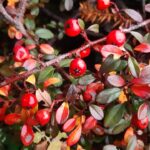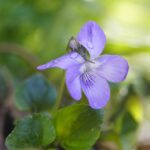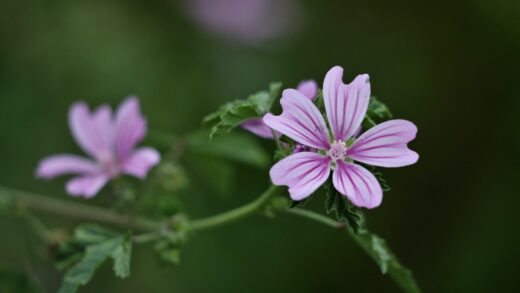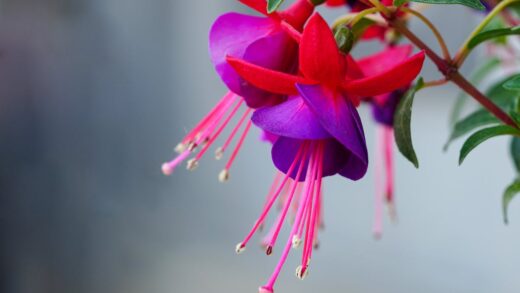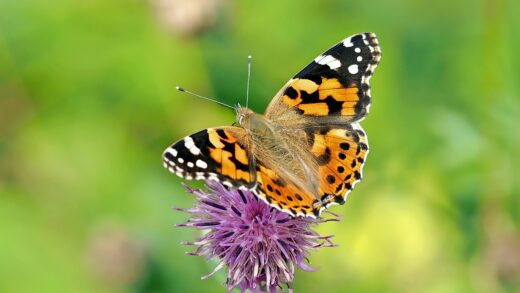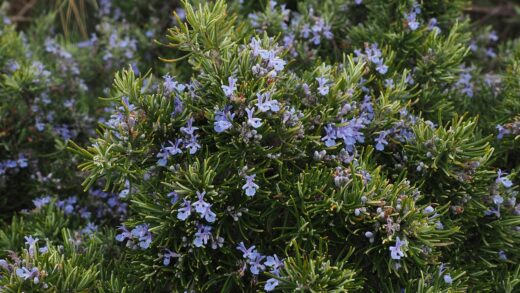Lavender, this wonderful, fragrant plant that evokes Mediterranean landscapes, is extremely resilient and requires little care. It primarily prefers dry, sunny locations, and its root system does not tolerate standing water. Although many people believe lavender is almost invulnerable, in reality there are diseases and pests that can threaten the plant’s health and even destroy the harvest. It is important to be aware of these risks so that we can take action against them in time and protect our lavender plantation. The identification of diseases and pests, as well as preventive measures, are crucial for successful cultivation. Proper variety selection, well-draining soil, and expert pruning all contribute to maintaining the plant’s vitality. This reduces the chances of pathogens and pests establishing themselves.
Fungal Diseases and Their Prevention
Among the fungal diseases affecting lavender, the most common is gray mold, caused by the fungus Botrytis cinerea. This pathogen spreads primarily in humid, cool weather and in poorly ventilated conditions. Symptoms appear as browning of the shoots, rotting of the flowers, and a gray mold coating on the plant parts. To prevent infection, it is essential to avoid dense plant stands, maintain proper spacing during planting, and apply a disinfectant treatment after pruning. Ensuring good air circulation, avoiding overwatering, and guaranteeing good soil drainage are all critical factors in controlling Botrytis.
Another serious fungal disease is Phoma blight, caused by the fungus Phoma lavandulae. This pathogen attacks the root crown and lower shoots of the plant. The first signs of infection are dark spots that appear at the base of the shoots, which later turn brown and die. As the disease progresses, the shoots turn brown and gradually dry out. The most important defense against Phoma is proper plant hygiene, which means the immediate removal and destruction of diseased plant parts. It is also important to ensure good soil aeration, and if possible, avoid excessive nitrogen supply to the lavender, as this makes the plant more susceptible to infections.
Root rot, which can be caused by several different fungal species (e.g., Phytophthora spp.), is one of the most dangerous diseases of lavender. This problem occurs most often in poorly draining, heavy clay soils where water easily stagnates. Symptoms manifest as wilting, yellowing of the leaves, and then the sudden death of the entire plant. The key to prevention is proper soil preparation: loosening the soil and adding sand or gravel to improve drainage. Avoiding overwatering is fundamental, especially for potted plants where excess water can easily become trapped in the root zone.
Root-dwelling fungi, such as species of Armillaria, can also cause severe damage in lavender plantations. These fungi live in the soil and attack the plant through its root system, leading to root rot and the gradual death of the plant. Signs of infection include wilting of the plant, discoloration of the foliage, and the presence of fungal threads (mycelium) on the roots. Control is very difficult once it has appeared, so the emphasis should be on prevention. It is important to avoid infected soil and to properly remove and destroy diseased plant debris.
More articles on this topic
Pests and Their Control
Among the pests of lavender, leafhoppers (such as Hyalesthes obsoletus) pose the greatest threat because they spread phytoplasma diseases. These insects suck the sap from the lavender, transferring pathogens from one plant to another. As a result of the infection, the growth of the lavender slows down, the flowers become distorted, and the leaves begin to yellow. The disease is incurable, so control is limited to protecting against the vector leafhoppers. Mechanical removal, placing sticky traps, and using biological pesticides are all options for controlling these insects.
Root-chewing pests, such as the lavender root gall wasp (Euschistus heros), can also cause a serious problem. This pest lays its eggs in the root crown, and the hatching larvae chew on the root tissues. The plant becomes weak, its growth slows down, and in the case of a severe infestation, it can even die. Control focuses mainly on prevention. Regular inspection of the soil, removal of infected plants, and disinfection of the soil before planting can help avoid the problem. For soil-dwelling pests, the use of biological insecticides (such as Bacillus thuringiensis) that can be mixed into the soil can also be effective.
Aphids, although a widespread pest, rarely cause serious damage to lavender because the plant’s strong essential oil content keeps them away. However, under certain conditions, especially on young plants, they can settle and suck the sap from the shoots, which can lead to slowed growth and leaf distortion. The first step in control is mechanical removal, such as washing them off with a strong jet of water. In case of a more severe infestation, biological insecticides, such as neem oil-based products, can be applied effectively.
Spider mites can also establish themselves on lavender, especially in dry, warm environments. These tiny, spider-like creatures suck the plant’s sap from the underside of the leaves, which leads to the yellowing and then death of the leaves. In the early stages of the infection, small, silvery spots appear on the leaves, and later the leaves turn brown and fall off. The most important measures against spider mites are regular spraying of the plants with water and ensuring adequate humidity. Chemical control is only justified in the case of a severe infestation, and even then, biological versions of acaricides should be preferred.
More articles on this topic
Biological Control of Pests and Diseases
Biological methods are playing an increasingly important role in the control of lavender diseases and pests. These methods are environmentally friendly and effective, without harming the plant or the environment. Prevention is key, with the goal of maintaining the vitality of the plants. Proper watering and feeding practices, ensuring soil aeration, and regular pruning all contribute to increasing the plant’s resistance. The chances of diseases and pests appearing can be significantly reduced by cultivating healthy plants.
Beneficial insects, such as ladybugs and lacewings, play an important role in the biological control of aphids. These predators naturally regulate the pest population. We can attract them to our garden by planting flowers next to the lavender that serve as food for them. Supporting the population of beneficial insects provides a long-term, sustainable, and effective solution in the fight against pests. It is important to avoid using broad-spectrum insecticides, as these also destroy beneficial organisms.
In the biological control of fungal diseases, the use of Trichoderma species is becoming increasingly widespread. These beneficial fungi live in the soil and have a symbiotic relationship with the plant’s root system. Trichoderma fungi compete with pathogenic fungi for nutrients and space, and in some cases, they even parasitize them. Soil treatment with Trichoderma preparations increases the resistance of lavender to root rot and other soil-dwelling diseases. This method should be used as part of prevention, especially in soils prone to diseases.
Bacteria, such as Bacillus subtilis, can also be used effectively in the control of fungal diseases. This beneficial bacterium acts as a biological fungicide, preventing the multiplication of pathogenic fungi. Bacillus subtilis forms a kind of protective layer on the leaves and other plant parts, which prevents pathogens from entering the plant. The preparation can be applied in the form of a spray and is particularly effective in controlling gray mold. The use of biological agents is a more sustainable and environmentally friendly solution compared to conventional methods involving chemical pesticides.
Integrated Pest Management and Environmentally Friendly Practices
Integrated Pest Management (IPM) is also crucial in lavender cultivation. This approach is based on a combination of prevention, biological, and chemical control, minimizing environmental impact. In IPM, the use of pesticides is only justified when other methods are no longer sufficient to suppress pests or diseases. The goal is to maintain a healthy plant stand that can withstand stress and pathogens. To achieve this, it is important to continuously monitor the plants and detect problems early.
Environmentally friendly practices also include proper variety selection. It is worth choosing lavender varieties that are genetically more resistant to local diseases and pests. For example, some varieties of Lavandula angustifolia are more resistant to fungal diseases than others. The selection of the cultivation area is also critical, as well-draining, sunny locations reduce the chance of fungal diseases developing. Proper management of plant residues, composting, and the removal of infected parts also play an important role in plant protection.
Chemical control, although often unavoidable, should only be used when absolutely necessary, and the least harmful preparations should always be chosen. It is important to use approved pesticides with the correct active ingredients and to strictly follow the dosage and spraying schedule prescribed by the manufacturer. During chemical control, the impact on bees and other pollinating insects must also be taken into account, as lavender is an important source of nectar for them. Therefore, spraying should preferably be done before or after flowering.
Improving the condition of the soil is also of fundamental importance in integrated pest management. Well-structured, nutrient-rich, but not over-fertilized soil promotes the development of a healthy root system, which is the key to the plant’s basic vitality. The addition of organic matter, such as compost, improves the soil’s structure and water balance. Lavender does not require excessive nutrients, but maintaining the lime status of the soil is important. In addition to plant protection treatments, soil care is a key element of long-term, successful lavender cultivation.









